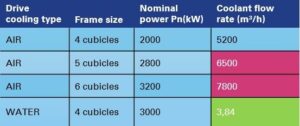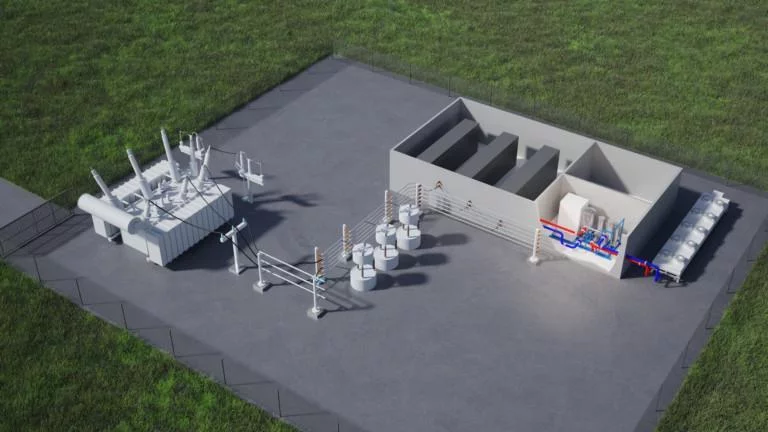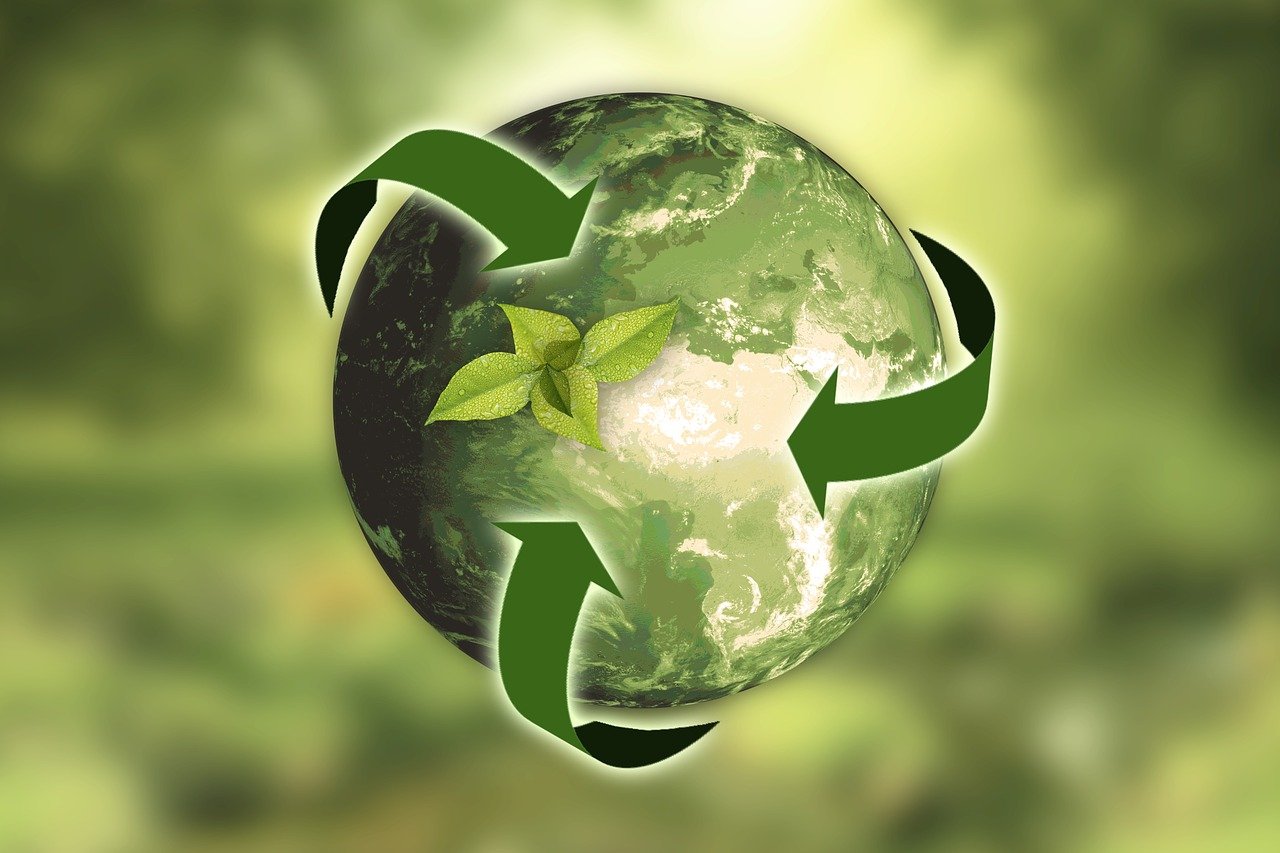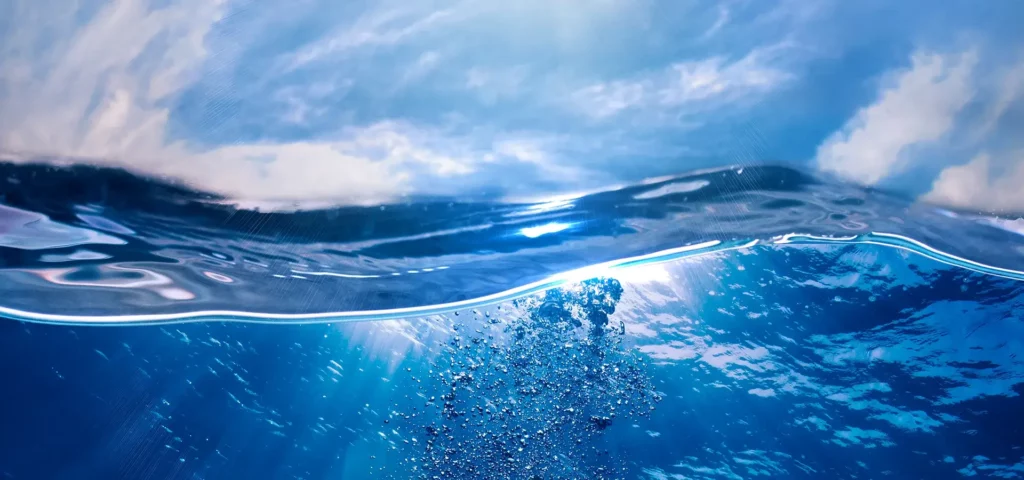Reducing CO2 emissions is crucial for limiting the impact of climate change. Electrification is the key action in this process.
Adwatec’s role in reaching a more sustainable world is twofold:
- We work with our products and operations to minimize our own carbon footprint
- We help our customer’s and end users with their sustainable energy solutions
The product and operations footprint
There are practically two cooling methods for power electronics: air cooling and water cooling. Water cooling is a preferred choice to cool high power electronics because:
- Water as a cooling element is around 1000 times more efficient than air. This makes it possible to design physically smaller sized power electronics. Thus, also less material is used. The same applies for the cooling system: water cooling system is smaller in size when compared to air cooling system. This also means less floor space is needed.
- Also, to achieve the same cooling power, less energy is required in water cooling system.
- Water cooling system is silent in comparison to air cooling system. The difference may be up to 10…15 dB.
- Water cooling system is maintenance easy. There are very few wear and tear components in the system and as a closed water circuit environmental challenges are not impacting the cooling process.
- In the water cooling system the waste heat can be efficiently recycled using water-to-water heat exchangers.
- The pumps may be operated with frequency drives. So called “ecomode” makes it possible to run the cooling system with lower energy consumption.

Adwatec’s own carbon footprint is minimized through various initiatives:
- The supplier network consists of nearby suppliers reducing the transportation and logistics footprint.
- All material is recycled.
- The facilities energy sources for heating and electricity are green by choice.
Sustainable energy solutions
The world is moving towards everything using electricity. The benefits in operating machines, systems, etc. with electricity are numerous:
- Electricity efficiency is high, losses are low (when compared to for example traditional gas or diesel engines)
- Electricity can be produced in a sustainable way
- Electricity can be transferred, storaged and modified to very different kinds of uses easily
Customers use electricity in different ways and use various currents, voltages, frequencies and powers. The electrical power supplied by transmission and distribution networks needs to be modified to customer specific needs. The way to do this is to use Power electronics devices, which convert the network electricity to customer application specific wave, shape and form. These devices are great but also they have their weakness: they generate heat because of internal losses. While operating the power electronics get hot. If they get too hot, they fail. Thus, they need to be cooled. High power electronics heat a lot and therefore their cooling is often done with water or liquid. Adwatec products are made to cool these devices.
The electrifying world cooling needs and Adwatec opportunities can be divided as follows:
- Variable frequency drive (VFD) applications – energy savings
- VFDs are the most common power electronics products. The idea of a VFD is to operate the electrical motor with the right rotation speed and torque. The alternative for this is a fixed speed motor use. The benefits of using VFD’s are energy savings in motor use, easy control of the process and elimination of possible gear structures.
- The most common VFD use is AC (alternating current) to AC conversion (electric motor drive as an example). There are also AC to DC (direct current) conversions (rectifiers as an example) and DC to AC conversions (solar converters as an example).
 SVC/STATCOM/HVDC applications in Power Grids and Industrial Grids – efficient energy transfer
SVC/STATCOM/HVDC applications in Power Grids and Industrial Grids – efficient energy transfer
- Electricity production and consumption are typically not in the same location. Thus, the electrical energy needs to be transferred between the production and the consumption and for this transmission networks are used.
- When electricity is transferred over long distances and/or when there are heavy inductive/ capacitive loads in the network system, the transmission capability/ capacity of the network declines.
- This decline can be corrected. So called compensation is the solution and SVC/STATCOM products are the actual products to do this. SVC/STATCOMs are power electronics devices.
- With higher power ratings these SVC/STATCOM generate a lot of heat and they need to be cooled with water.
- HVDC (high voltage direct current) applications are used in electricity power transmission in three different occasions:
- If the transmission lines are very long, the losses of AC power transmission increase too much.
- If the transmission is done with cables, the losses of AC cable transmission increase too much
- If there is a need to separate too networks from each other (for example isolate a stable network from an unstable network), HVDC back-to-back connection can be used.
- HVDC devices are SVC/STATCOMs on steroids and the cooling needs are accordingly very high.
- Battery/Electrical energy storage systems (EES/ESS) – energy storage
- The challenge with renewable energy production is that it varies with wind, sun, waves, etc. At the same the consumption follows its’ own paths. The supply and the consumption don’t match.
- Electrical energy storage systems save energy during the peak production times and release it during peak consumption.
- Energy storage systems are cooled with air and water cooling systems. The suitable cooling method depends on the battery operation cycles, the space available and the power density of the battery cells. Aggressive operation cycles (fast charging) generate heat more that slow cycles.
- Hydrogen applications
- Hydrogen applications stretch from hydrogen production to storage/transportation and hydrogen consumption in fuel cells.
- The hydrogen is produced with electrolyzers. These devices use water as a raw material and split it to hydrogen and oxygen. The process to split water requires DC current and energy and this is done with high power rectifiers. Adwatec cooling systems are used in cooling these rectifiers.
- During hydrogen storage and transportation the hydrogen is in a liquid format. The nature of a liquid is to evaporate to gas. This phenomen is called boil-of-gas (BOG). This is not desired and therefore compressors are used to convert the gas back to liquid. The compressors are big in power and operated with drives, which are water cooled.
- When hydrogen is burnt in a fuel cell and electricity is thus generated, also heat is generated in the process. Fuel cell is cooled with water cooling circuit as well.
Adwatec is playing an important role in a global push for a better and more sustainable world. Our products are designed and manufactured environmental concerns in mind. All our products end up to customer applications that focus in new more sustainable ways to increase productivity and reduce environmental footprint.




